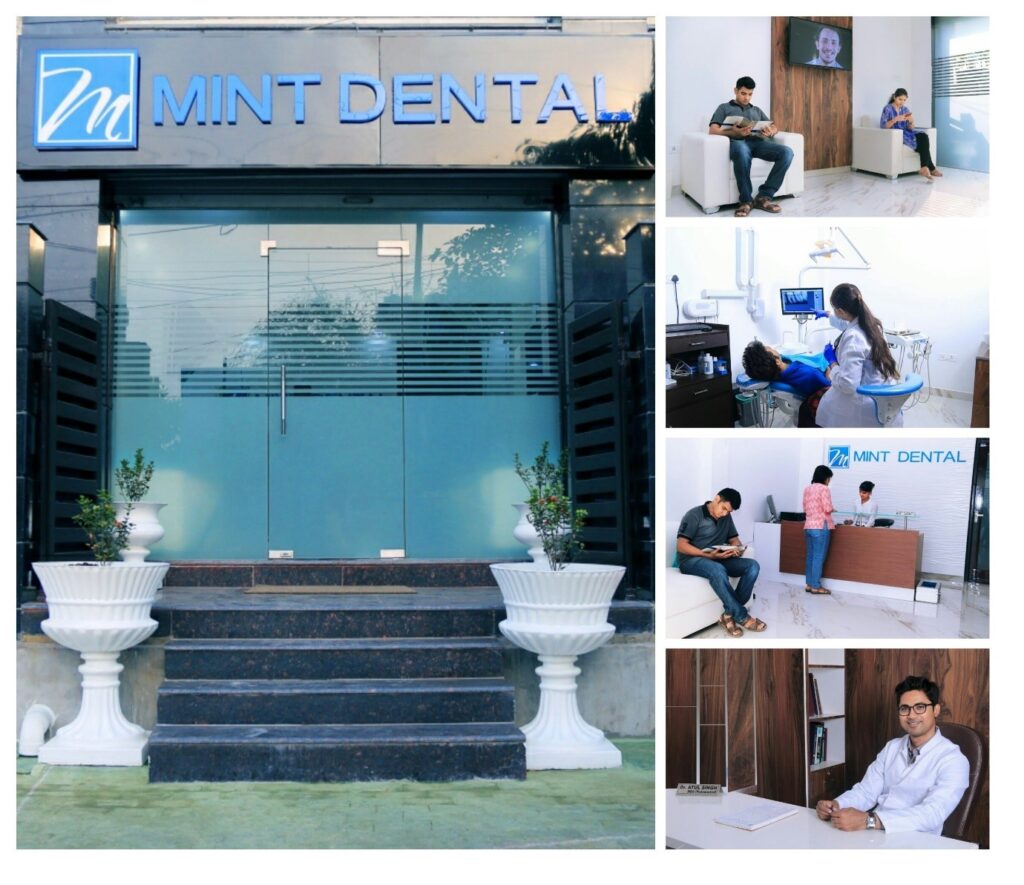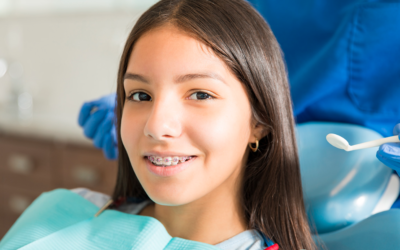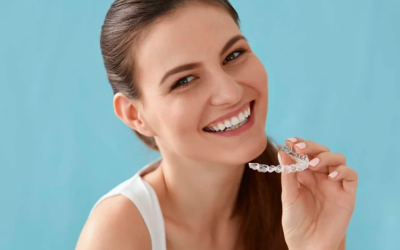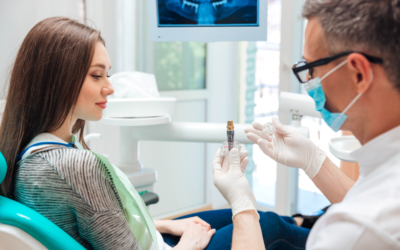Brushing your teeth might seem like one of the easiest things you can do. Most people would even feel offended if you tell them that they are brushing their teeth in incorrect manner. However, it is not as simple as it seems. Most people brush their teeth in non-optimal ways.
Some people only brush their teeth for 30 seconds. Some people don’t use the right angles and techniques. Some people brush way too aggressively and some people don’t even use toothpaste. To get the most optimal results from brushing, you need to really nail down a couple of facts and movements.

According to Dr. Atul Singh (MDS) at Mint Dental people should realize that tooth decay and gum diseases are the main causes of tooth loss. The best way to prevent tooth decay and gum diseases is a proper dental hygiene routine. This way, you can prevent multiple problems in a row, saving you money and time.
Now that we have established the importance of an ideal oral hygiene, we will move on to what not to do when taking care of our oral health. The main thing that people mess up is the technique of brushing and how long should they brush their teeth. According to Dr. Atul Singh (MDS) these are some of the things that you shouldn’t do while brushing;
What Not to do!
- Not changing your brush every 3 months
Average lifespan of a toothbrush is about 3 months. After this time period, the brush holds onto too much bacteria and can’t properly clean your teeth/gums. This happens because the bristles at the brush becomes worn out and become inflexible. A change of tooth brush is always nice!
- Brushing under 2 minutes
Majority of the people don’t really brush their teeth for the minimum required time, that is, 2 minutes. They think they are brushing it for 2 minutes but the reality is often disappointing. You should give equal times to every part of your mouth and you can even use a timer to help you with the timing.
- Not cleaning your tongue
You should never forget to also brush your tongue. Tongue can also hold bacterias that can be harmful for your oral health. You should always consider to clean the tongue with bristles of the brush and give at least 30 seconds to it.
- Aggressive brushing
Aggressively brushing teeth or using a hard-bristled toothbrush can result in damaged teeth and gums. You might see some bleeding when you are brushing your teeth. Dr. Atul Singh in Mint Dental always advises his patients to be gentle and soft to their teeth and gums. Proper care is required for a healthy mouth!
- Brushing too many times a day
‘Can you brush your teeth too much’ is a question we get very often. You don’t need to brush your teeth more than twice a day. Too much brushing can decrease the enamel on your teeth and it can also do unnecessary damage to the gums. So, you can brush your teeth too much.
- Bad technique and movement
This is something that most people get wrong. We will give you the right technique and movement in next section of this article.
- Rinsing your mouth immediately after brushing
Everyone uses water after brushing to get those toothpaste out from the mouth. However, this can result in the toothpaste getting flushed immediately as well. When this happens, efficiency of the fluoride takes a huge hit. So, we should be using only little amount of water to rinse our mouth after brushing.
Now that we have removed what we shouldn’t do out of the way we can discuss the correct brushing technique. We will show you the exact positioning and technique in steps. With the help of the correct movement, your oral hygiene will improve greatly.

Time needed: 2 minutes
How To Brush Properly?
-
You should hold the brush at a 45-degree angle to your gums. The grip doesn’t have to be hard or soft, neutral is fine.
-
Use the brush in a mild way and slowly brush back and forth the entire outer and inner gum line. Make sure to reach the backside of the mouth as well.
-
Use the brush to completely clean the entire front teeth and the inner parts of the front teeth (the side we can’t see). To do that, adjust the
-
Move on to the chewing teeth and brush them at a 45-degree angle at the front. When you need to brush the inner side, just use a vertical grip to fully reach those back areas.
-
Brush your lower part of the teeth in a similar manner. Give 30 seconds to each area to get that 2-minute spot
-
Don’t forget to brush your tongue as well.
Flossing
Don’t forget that teeth brushing is not the only thing you can do for improving your oral hygiene. Flossing is also is a big tool that you can utilize into your teeth cleaning regime. Using a floss can be complicated for some people. But it’s actually quiet easy;
- To get maximum effects from a floss, use only the 4-5 inches of the floss
- Use your thumb and index fingers to control the floss and slide it softly at your teeth
- Make sure to target the beginning of your gumline and reach to places that a brush cant
- Don’t be aggressive with it as it can damage and bleed your gum tissue. If you are not using a clean floss, it can even create infections
- Always use the back and forth movement to fully clean your mouth

Frequently Asked Questions
It is best to brush your teeth last thing at night, before you go to bed. You should also brush them at one other point during the day, for example in the morning.
You should brush your teeth for two minutes. That’s all it takes to brush your teeth optimally.
Whether you use a manual toothbrush or an electric one, it’s important that you take the time to cover all the surfaces of your teeth and mouth.
Don’t rinse with water straight after brushing.
Remember to spit out after brushing and do not rinse your mouth with water. This helps the fluoride stay on your teeth longer.
Both manual and electric toothbrushes are effective for keeping your teeth and gums healthy.
Electric toothbrushes have oscillating rotating or vibrating heads. Tests show these toothbrushes are more effective at removing plaque.
Everyone can benefit from an electric brush. They are particularly useful for those with limited movements, such as disabled or elderly people.
As many now come with their mobile apps, they can also be better for children, who are motivated by the interactive nature of using an electric brush.
Adults should go for a small-to-medium-sized brush head. This should have soft-to-medium, multi-tufted, round-ended nylon bristles or ‘filaments’. The head would be small enough to reach all parts of the mouth – especially the back of the mouth where it can be difficult to reach.
Children should use smaller brushes but with the same type of filaments.
It is now possible to buy more specialized toothbrushes. For instance, if you suffer from sensitive teeth, you can now use softer bristled brushes.
There are also smaller brush heads for those with irregular-shaped teeth.
Some may also find it difficult to hold a toothbrush, for example, because of limited movements or disabilities. There are now toothbrushes which have large handles and angled heads to make them easier to use.
Worn-out toothbrushes do not clean your teeth properly and may harm your gums.
It is important to change your toothbrush, or toothbrush head (for electric users) every two-to-three months, or sooner if the filaments become worn.
When bristles become splayed, they do not clean properly.
A pea-sized blob of fluoride toothpaste should be used when brushing your teeth.
Everybody older than three-years-old should use toothpaste between 1350ppm to 1500ppm of fluoride. This is enough to help strengthen your teeth and protect you from tooth decay.
As well as regular toothpaste, there are many specialized kinds of toothpaste available in the market. These include tartar control for people who get tartar build-up and a choice of toothpaste for people with sensitive teeth. ‘Total care’ toothpaste includes ingredients to help fight gum disease, freshen breath, and reduce plaque build-up. ‘Whitening’ toothpaste is good at removing staining to help restore the natural color of your teeth.
A fluoride mouthwash can help prevent tooth decay. Your dental team may recommend an antibacterial mouthwash to help control plaque and reduce gum disease.
If you find that you are regularly using a mouthwash just to freshen your breath visit our team at Mint dental, because bad breath can be a sign of unhealthy teeth and gums or of poor general health.
You can clean between your teeth with an ‘interdental’ brush or dental floss.
Cleaning in between your teeth removes plaque and food particles lodged between your teeth and under your gumline – areas a toothbrush can’t reach.
When flossing or using interdental brushes, keep to a regular pattern and remember not to miss any tooth surface. It helps to look in the mirror.
Don’t forget the backs of your last teeth. It is also very important to clean around the edges of any crowns, bridges, or implants.
Summary
Flossing and brushing your teeth is the best defense against teeth and gum problems. Taking care of all these aspects guarantee healthy gum tissue and tooth quality. Your teeth are there with you to the end, don’t forget that. Stay safe!
If you have any questions or would like to schedule an appointment with Dr. Atul Singh at Mint Dental call +918795229292 or request an appointment by filling out the form on this page.




